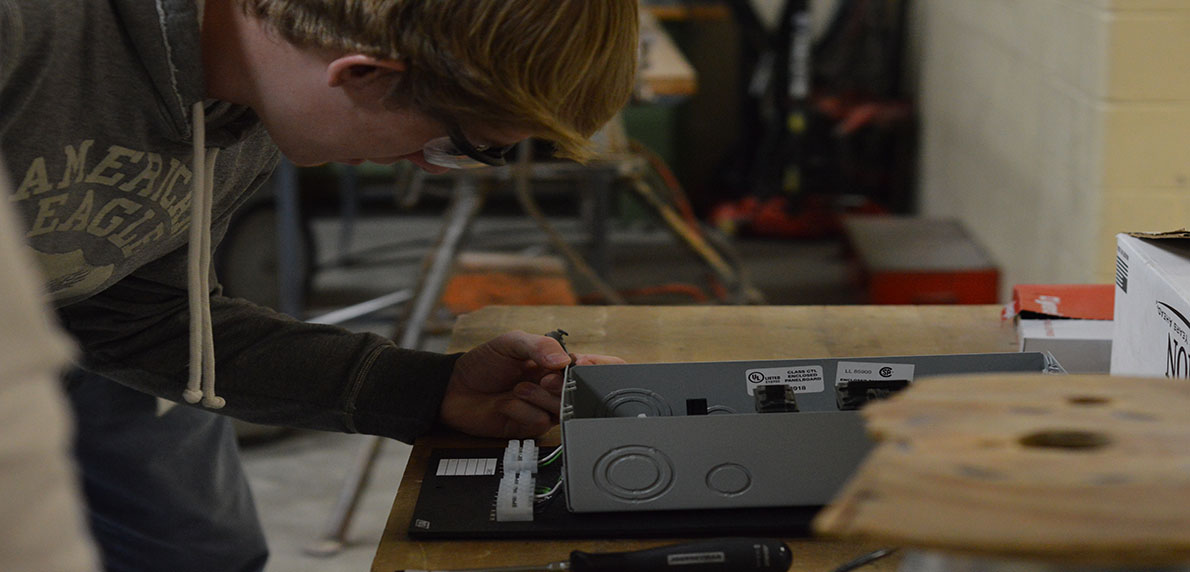Course Text
NEC 2014 NFPA 70: National Electrical Code
Additional References
Lab materials handouts and other handouts as necessary
Attendance Policy
Missing 20% or more during one semester will result in dismissal from the dual enrollment program, if enrolled. Students will receive points per day for attendance and participation. Students will receive a call home after 3 missed day per semester. After 5 missed days the students will have meeting with the parent and principal.
Course Requirements
A hand held calculator capable of scientific and trigonometric functions will be required to perform calculations in assigned problems found in class work, homework, tests, and the final examinations. Texas Instruments TI-30XA is strongly recommended. Cell phone calculators are not allowed.
Student Course Responsibility
The student is responsible for all assignments, reading material assignments, laboratory experiment observations, and all materials covered during lectures and laboratory sessions.
Student Conduct Policy
- Students must come prepared for class with their notebook, calculator, and pen/pencil.
- Cheating will result in a grade of a zero and the incident reported to the principal.
- We must conduct ourselves in a professional manner at all times.
- We must treat all members of the class with respect.
- Harassment/bullying is not tolerated. If you witness such behavior, report your concerns to Mr. Freeman or an administrator.
- Cell phones should be turned off before entering classroom. The use of cell phones is prohibited in the classroom and other areas of the school per the Rowanty Student Code of Conduct.
Assignments
All assignments (homework, quizzes, examinations, lab reports, projects, research reports, etc.,) are to be turned in by the due date without the instructor having to ask for or remind the student to turn in the assignment. Late assignments will have 10% of the maximum attainable grade deducted for each class assignment.
Homework
Homework is a learning tool used for the purpose of reinforcing the classroom discussions. Students are expected to complete the homework session and work any assigned problems prior to solutions being reviewed in class. At random times, homework may be collected, evaluated, and counted as part of the student’s grade.
Examination
A midterm examination will be given at the end of the fall semester and a final examination will be given at the end of the spring semester.
Lab Sessions
Safety in the laboratory is of the utmost concern at all times. The laboratory session is not dismissed until all materials are returned to the proper storage place and students have been approved to leave by the instructor. Lab projects are graded based upon performance, participation, and abiding by the safety rules.
Laboratory Safety Rules:
- Personal Protective Equipment (PPE) are the be worn at all times.
- Safety Glasses will be issued to the students at the beginning of the year, with it being the students responsibility to keep up with.
- Failure to wear all required PPE will result in dismissal from the lab and a “0” for that day’s participation grade.
- Closed-toe shoes are to be worn in the lab. No flip-flops or sandals.
Behavior in the Laboratory:
- Follow the directions of the instructor at all times.
- All Electronic devices must be off while in the lab.
- No food or drinks are allowed in lab. Water will be provided in designated locations.
- Never work by yourself at any time. There must be two people in the lab before any one person may use any machine or tool. No one may perform any lab task unsupervised.
General Equipment Safety and Clean Up Requirements:
- Do not work on any exercise while equipment is energized (HOT). Turn off all power before wiring or adjusting any circuits.
- The safety manual for this laboratory is located in the SDS book.
- Know your lab equipment, know what it can and cannot do. If you do not know how to do something, ASK.
- Check your lab equipment and make sure it is secure and in good working order.
Grading Scale
A 90 – 100
B 80 – 89
C 70 – 79
D 60 – 69
F Below 60
Grade Evaluation
Quarter
Laboratory
Test
Quizzes/Classwork
Participation/Homework
Semester 1 / 2
Quarter 1 / 3
Quarter 2 / 4
Exam 1 / 2
Class/lab attendance and performance, safety emphasis, equipment usage, and area cleanup are all part of the daily participation grade. Tests will be given at the end of each chapter/unit.

